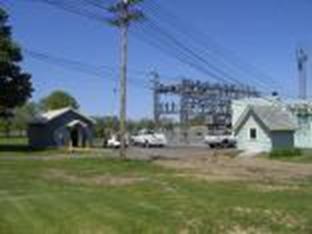|
Mohawk Municipal Commission | The Water Commission | The Electric Commission | Water Reports |
Electric Department
The Mohawk Municipal Commission is governed by the New York State Public Service Commission; they approve all the rates and charges the Commission is allowed to charge its customers. The State of New York created an agency to control the State’s energy grid called the Independent System Operator (ISO). The ISO oversees the grid with a governing council. The ISO decision about the grid effects the power adjustment that you see on your bill.
Our customers have had a lot of concerns and questions regarding the Power Adjustment on your bill. The power adjustment is the variable piece of your bill which is not built into the base rates of the electric department. Our bill has three components: Niagara Mohawk Wheeling Charges, New York Power Authority Firm Hydro Power, & New York Municipal Power Association Open Market Energy Purchasing. The bill the Commission receives from the NYPA is for firm power purchases that are generated from renewable hydro energy. The National Grid bill the Commission receives is a charge we pay for the use of National Grid’s lines that deliver energy to our substation to distribute power to our customers. The NYMPA bill the Commission pays is for purchasing power on the open market in a block of power that is above the amount of our power contract that NYPA provides for our customers. The NYMPA bill is exposed to market pressures such as congestion, line losses, and insurance which results in higher costs to you the consumers. During the winter heating season the power adjustment were quite high, the reason for these large power adjustments mainly stemmed from things that were out of our control. The ISO allowed the shutting down of 345kV transmission facilities throughout the state for maintenance and repairs which caused congestion of electric lines running west and east in the state.
The Commission belongs to the Municipal Electric Utilities Association and the New York Municipal Power Association who sit on the ISO council. These two groups attorney’s are fighting to reduce the power adjustment in the future. One example of that is trying to make the ISO to schedule substation maintenance on the grid on a non heating season schedule.
Reducing the Power Adjustment Starts with You: The Commission has started an energy efficiency program for our customer. Our peak is the sum total of all our customers usage for one month. By reducing our peak through conservation we can help reduce the power adjustment! The Commission has given away some energy efficient light bulbs to our customers to help reduce the peak.
|

|
Be prepared for emergencies…………
Keep a flashlight and battery powered radio on hand (with fresh batteries) Learn how to check your circuit breaker panel or fuse box
If the power goes out…………….
Do Not Attempt To Move Or Touch Any Power Lines, Trees Or Obstacles. Look outside and see if the outage has affected your neighbors If not, check your circuit breaker panel or fuse box for possible internal problems If your neighbors are without power too, look around for any possible causes Tree or branches on the lines Downed wires Flashes of light Turn on your battery operated radio – we will advise the local stations of the problems and the status of the repairs During normal business hours call 315-866-4170 to report the outage. After business hours call 911 Be patient, other customers will probably be calling as well Check on elderly relatives and neighbors and advise emergency services if they are in need of assistance We will restore your service safely, quickly and efficiently |

|
Compact Fluorescent Light Bulbs
Saving lighting cost goes way beyond turning off the light switch when you leave the room. Here are a number of low-cost actions you can take to save energy and money. If every American Home replaced just one light bulb with an Energy Star qualified bulb, we would save enough to light more than 3 million homes for a year, more than $600 million in annual energy costs, and prevent greenhouse gases equivalent to the emissions of more than 800,000 cars.
Energy Star Compact Fluorescent Light Bulbs (CFLs): -Use about 75 percent less energy than standard incandescent bulbs and last up to 10 longer.
-Produce about 75 percent less heat, so they’re safer to operate and cut energy cost associated with home cooling.
How to Choose and Where to Use CFLs: CFLs provide the greatest savings in fixtures that are on for a substantial amount of time each day. Energy Star recommends installing CFLs in fixtures that are used at least 15 minutes at a time or several hours per day. The best fixtures to use are normally found in the following areas of your home: -family and living rooms, kitchens, dining rooms, bedrooms. When buying bulbs, look for the highest lumens-per-watt ratio, lumens measure the amount of light a bulb gives off, while watts measures how much energy a bulb uses. A typical lumens-per-watt ratio for an incandescent bulb is 15:1. This compares to 60:1 for a fluorescent bulb.
Replace outdoor floodlights with halogen lamps, or use motion detectors. A 50 or 90 watt halogen can replace a standard reflector bulb that has twice the wattage. Motion detectors save energy and money be turning on lights only when needed.
Guidelines for Replacing Bulbs with Fluorescent Bulbs
|
MEASURING ELECTRICITYElectricity is measured in units of power called watts. It was named to honor James Watt, the inventor of the steam engine. One watt is a very small amount of power. It would require nearly 750 watts to equal one horsepower. A kilowatt represents 1,000 watts. A kilowatthour (kWh) is equal to the energy of 1,000 watts working for one hour. The amount of electricity a power plant generates or a customer uses over a period of time is measured in kilowatthours (kWh). Kilowatthours are determined by multiplying the number of kW's required by the number of hours of use. For example, if you use a 40-watt light bulb 5 hours a day, you have used 200 watthours, or 0.2 kilowatthours, of electrical energy. |
|
ater Commission |


|
Mohawk, New York 13407 |
|
E |
|
lectric COMMISSION |
|
Phone 315-866-4170 or 315-866-3177 Email: mohawkmuni@hotmail.com Fax 315-866-6659 |






